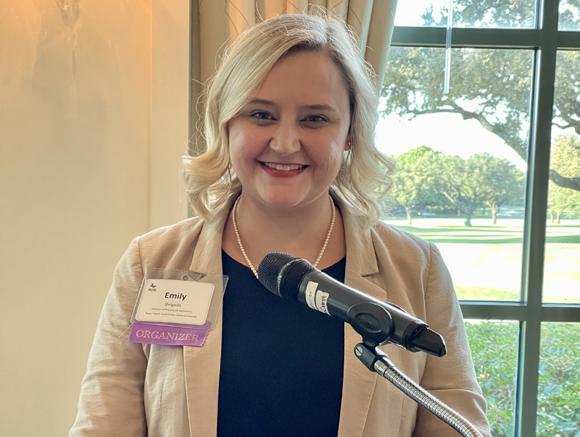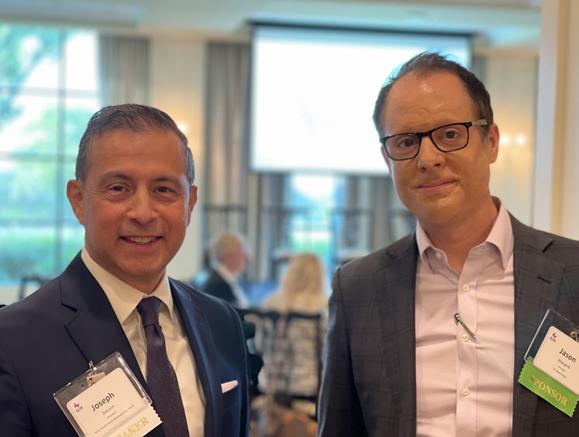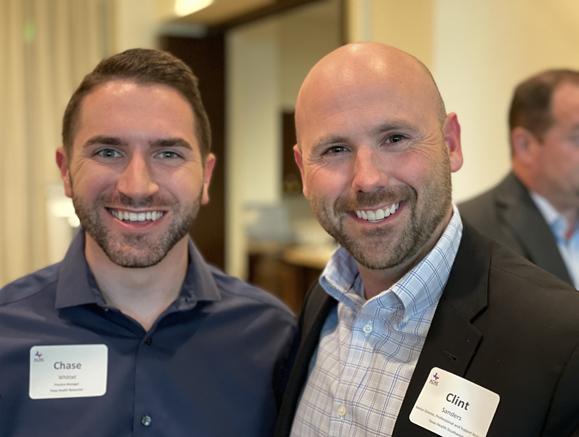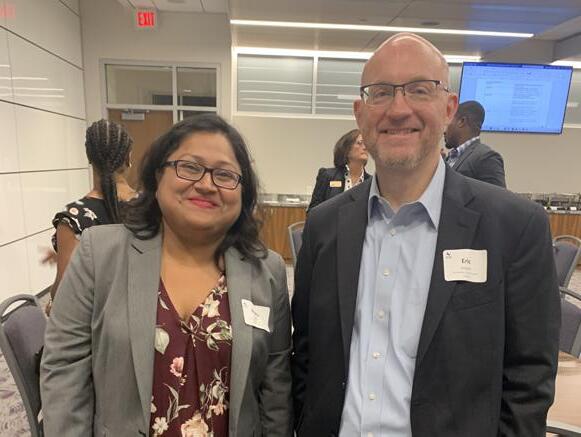
8 minute read
CLINICAL STAFF RETENTION IS A KEY TO ENHANCING HEALTHCARE EXECUTIVE RETENTION
By James Taylor, MBA, MAGS Group President and CEO of Physician and Leadership Solutions for AMN Healthcare
The burnout that nurses, physicians and other clinical professionals have experienced as a result of COVID-19 and other factors has been well documented. AMN Healthcare research indicates that 57% of nurses feel burned out most days while 23% are likely or very likely to leave nursing as a result of the pandemic. Close to 60% of physicians feel burned out most days, compared to 40% prepandemic, while 37% would like to retire in the next year. Both nurses and physicians are very much a part of the “Great Resignation” that has seen millions of workers of all kinds walk away from their jobs.
Advertisement
What is less noted is the burnout being experienced by healthcare executives. Just as the pandemic exacerbated stresses already being felt by nurses and physicians, it also compounded the challenges healthcare professionals face. Key among these are the always difficult challenges presented by the revenue cycle.
Hospitals have generally experienced downward operating margins over the last year to 18 months and relative to pre-pandemic levels. The American Hospital Association’s Current State of Hospital Finances Report, September 2022 projects that hospital margins will be down 37% in the latter part of 2022 relative to pre-pandemic levels. According to Kaufman Hall’s December 2022 National Hospital Flash Report, hospital margins overall were down every month of 2022 through November. With its strong economy, some North Texas hospitals have fared better than those in rural Texas and other areas of the country, but finances remain a continuous challenge for healthcare leaders everywhere.
What is new is that financial challenges are no longer the most pressing concern facing healthcare executives. The American College of Healthcare Executives conducts an annual survey tracking the most immediate concerns and priorities of hospital Chief Executive Officers (CEOs). Its most recent survey, based on 2021 data, indicates the following:
Top Priorities Facing Hospital CEOs
• Personnel shortages
• Financial challenges
• Patient safety and quality
• Behavioral health/addiction
• Government mandates
• Access to care
• Patient satisfaction
• Physician-hospital relations.
Notable here is that “financial challenges” had been the number one concern of hospital CEOs identified in the survey every year since 2004. Finances are almost always the primary concern of healthcare executives, but today, “personnel shortages” are in the top spot. Personnel shortages are, of course, linked to financial challenges since they often lead to higher labor costs. The American Hospital Association projects hospital labor costs will have increased in 2022 by $86 billion over 2021 levels, while non-labor expenses such as equipment and supplies will have increased by $49 billion, largely due to inflation. Lack of adequate staffing also can inhibit revenue generation by reducing availability of services. Kaufman Hall found that 66% of facilities surveyed said staffing shortages have required their organizations to run at less than full capacity.
Personnel shortages also are closely linked to other highpriority concerns of hospital leaders listed above, such as patient safety and quality, behavioral health, access to care, patient satisfaction, and physician-hospital relations.
The escalating challenges that healthcare leaders face – many of them related to personnel shortages – are a key factor driving burnout and turnover among hospital CEOs and other executives. Other factors that also drive executive turnover such as the aging demographics of physician leaders, system consolidation, and evolving leadership roles and responsibilities remain in play. Important to note, however, is the interrelation between nurse, physician and other clinician satisfaction and retention, and the satisfaction and retention of healthcare leaders. If hospitals and other healthcare facilities can improve the satisfaction and retention of their clinical staff -- and thereby solve one of their greatest challenges -they can improve the satisfaction and retention of their own leaders.
A Strategic Reassessment
When it comes to executive leadership retention and more broadly on issues of total talent solutions, a reassessment of each facility’s relations with its clinical staff is vital. Factors to consider include:
Quality of the Work Environment. Retention of nurses, physicians and other clinical professionals is tied most directly to the quality of their work environment. Surveys consistently confirm that clinical professionals derive their greatest satisfaction from providing patient care. Sources of dissatisfaction consistently are tied to those duties or obligations that distract them from patient care or inhibit the quality of care they can provide.
In the case of nurses, these distractions can include work allocation that requires them to restock supplies, engage in heavy manual labor such as lifting patients, and excessive documentation/paperwork. Today, nurses also are increasingly concerned about high patient to nurse ratios which limit their ability to provide quality care to each patient.
Physicians have similar concerns, particularly over excessive quality documentation, reimbursement requirements, access to tests, equipment and patient records, and even inconvenient parking. Nurses, physicians and other clinicians today also express a growing desire for schedule flexibility. Often, schedule flexibility can be a higher priority than compensation increases.
In light of COVID-19, many healthcare facilities engaged in morale-boosting events such as free lunches for clinicians or prominent recognition programs, and also provided clinician wellness programs. These efforts are important and meaningful, but it is the day-to-day quality of the work experience that resonates most with healthcare professionals. If that experience has not improved in line with their expectations, their satisfaction levels and retention rates also are unlikely to improve.
In reassessing their staff relations, healthcare facilities should focus on what they can do to enhance the work conditions and work experiences that their staff face every day. This may include reallocation of work assignments so that nurses spend less time stocking shelves and more time monitoring patients. It also may include the delegation of less complex care to advanced practitioners such as physician assistants and nurse practitioners so that physicians can practice to the top of their training, as well as the use of scribes to relieve physicians of data entry duties.
Nurses, physicians and other healthcare professionals typically are not pulled from their practices by offers of more money or other perks. Instead, they are more often pushed by working conditions in their current practices that they find undesirable. Healthcare facilities should ensure that their staff have no reason to believe that the grass will be greener elsewhere.
Appropriate Use of Travel Providers. As a result of the pandemic, hospitals throughout North Texas and the U.S. increased their use of travel nurses and other contingent labor. Demand for travel nurses became acute and per diem rates paid to travelers increased significantly as a result of the imbalance between supply and demand. Travel nurses today represent approximately 5% of the total nurse workforce, though their numbers are growing. They were always meant to be a supplement to the permanent staff and never meant to be the answer to long-term personnel shortages. There are very limited circumstances in which travel or other contingent professionals should represent more than 10% of a facility’s staff, though today they often do.
Healthcare facilities should reassess their use of travelers to help ensure they are being used appropriately. One key to doing so is the implementation of predictive analytic software which allows for a more precise projection of what kind of contingent labor will be required over the course of a year and how many providers will be needed. Efficiencies also can be gained through the managed services provider model, in which contingent staffing can be planned, managed and invoiced through a single point of contact rather than through multiple vendors.
Implementation and Expansion of Telemedicine. Telemedicine allows healthcare facilities to implement the emerging hybrid staffing model that employs both inperson and virtual care. This can be an excellent retention tool as it offers providers the schedule flexibility that many seek, particularly the option to work from home. This option is likely to become a recruiting prerequisite in the future as providers become more habituated to remote work.
Leadership Opportunities. Physician leaders have become an increasingly important bridge between the executive and the medical staff in part because they can justify a healthcare facility’s policies and procedures from the clinical perspective. In reassessing their staff relations, healthcare facilities should examine ways to expand leadership opportunities to nurses, advanced practice professionals and other clinicians who also can serve as a key link to and extension of healthcare facility leadership.
Communications. Articles on retention typically stress communication, and for good reason. Healthcare executives and clinical professionals often come at the challenge of healthcare delivery from differing perspectives. Aligning the interests and goals of these critical parties can only be achieved through continuous, candid communication, using formal staff satisfaction and retention surveys and staff meetings, informal venues such as meals or social events, and the mediation of clinicians who also are executive leaders. All these channels should be vigorously employed.
Prior to the COVID-19 pandemic, concerns about clinical staff retention typically were not connected to retention of healthcare executives. Given the pervasive shortage of healthcare professionals and the challenges they pose, clinical staff retention and executive staff retention should be viewed as mutually supportive goals.
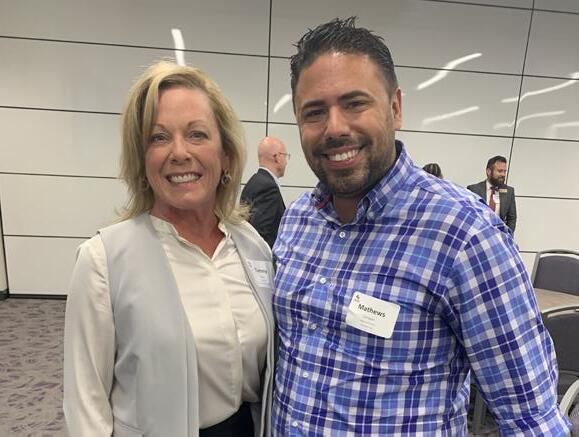
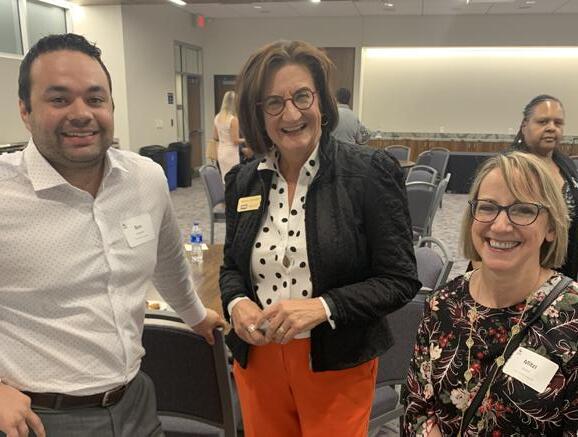
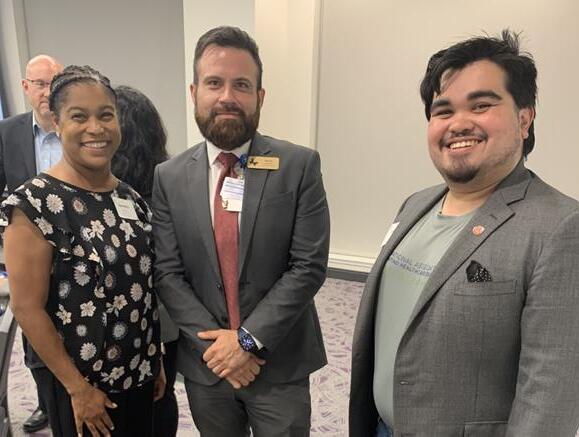
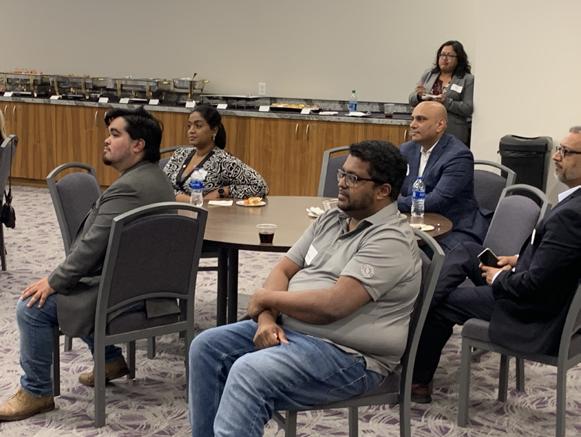
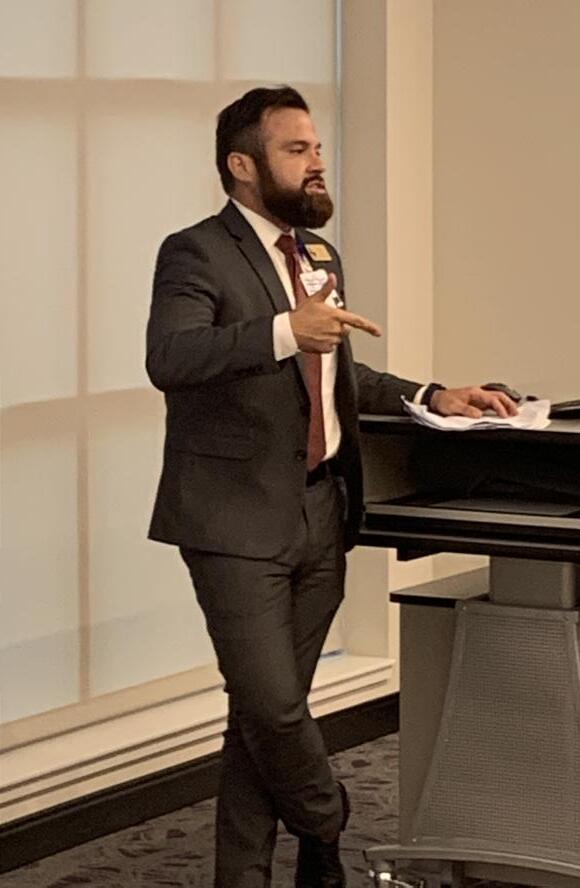

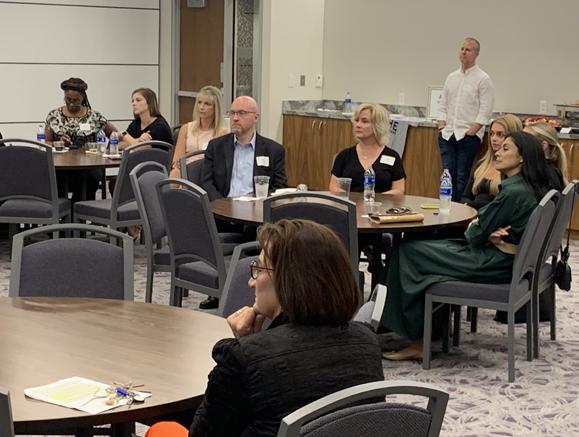

Breakfast with the CEO - Ben Coogan October 5, 2022
By Michael Belkin JD, MSHA, FACHE, CMPE
On October 5, 2022, about 25 members and guests of the North Texas Chapter of ACHE met at Medical City Fort Worth to network, fellowship and meet their Chief Executive Officer, Ben Coogan. Ben began with a very timely quote by Denis Waitley reminding us that Time and Health are the two most precious assets. Given the pandemic challenges of the last few years, the message resonated well.
Ben shared his personal journey starting in his birth city of Greenville NC, home to East Carolina University. Ben’s father was an executive with the John Deere corporation and the family traveled for his father’s career. Ben grew up locally in DFW. He attended Texas A&M for undergraduate and University of North Texas for his master’s in healthcare administration studies. Ben was first introduced to healthcare due to a family need and later in his first career as a healthcare provider recruiter. Healthcare recruiting led Ben to the hospital setting and he has had a robust career within HCA. Ben’s leadership career with HCA has exposed him to facilities in Dallas, Arlington and currently Fort Worth. Ben has been able to stay in the DFW metro community and serve his hometown patient population.
In reviewing the highlights of Medical City Fort Worth, we learned that the hospital is a center of excellence for specialty services, such as stroke and gastroenterology, and for surgical services, such as transplant, neurosurgery, and cardiac surgery. Medical City Fort Worth is also a Graduate Medical Education facility and trains the next generation of physician specialists.
We learned about the hospital’s focus on reaching out to other area community hospitals to help with the specialty care that is a strength for Medical City Fort Worth. Community hospitals struggle to attract high level surgical and stroke care, so Medical City provides tele-stroke, for example, to support those patients in communities that do not have access to stroke neurology. We also learned about the various upgrades, renovations, and expansions for the hospital.
The current primary concern for CEOs is labor recruitment and retention. Ben certainly agrees that healthcare provider recruitment and retention is a primary objective and critical issue for him and his leadership team. Other upcoming challenges include market growth. The population of North Texas is exploding and thus a potential stress for all healthcare facilities in the area. We discussed during the Q&A session that the future of healthcare is moving to ambulatory/outpatient care and inpatient facilities will continue to focus on specialty care. Medical City Fort Worth is positioned well as a leader in neurology, oncology, and cardiology.
Ben lastly discussed how his team’s focus on the patient experience has yielded great results in quality and patient satisfaction scores. Medical City Fort Worth has surgical liaisons who live in the surgical unit to answer any patient questions and help navigate those patients through the pre- and post-surgery process.
Overall, the attendees learned much about the best practices of Medical City Fort Worth and how Ben’s leadership journey has impacted his career and his team in a positive way.
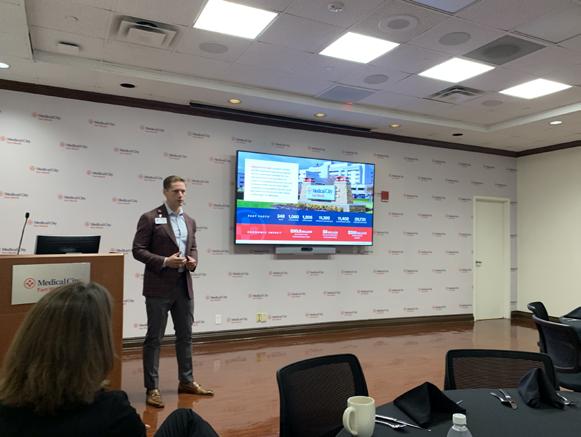
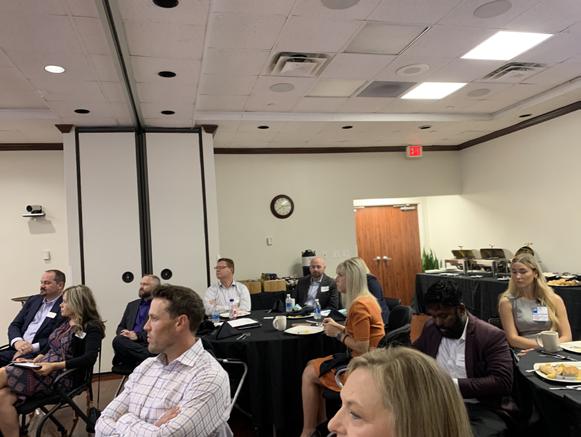
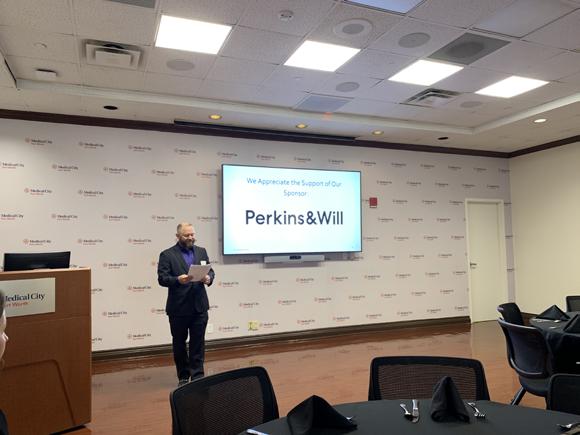
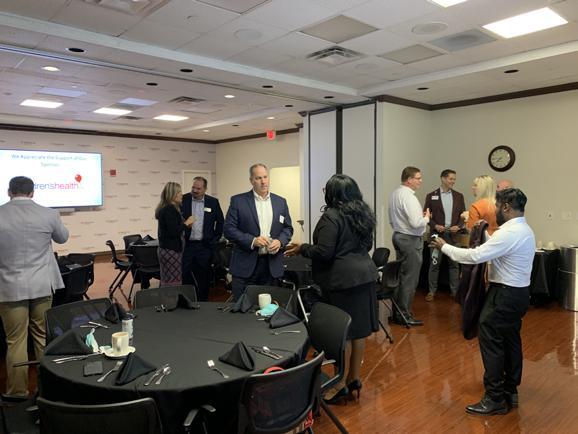
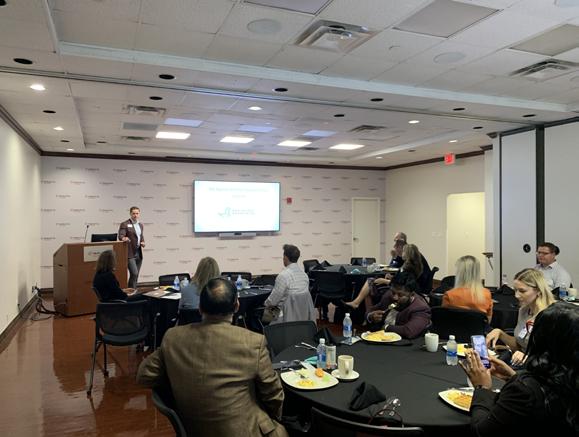
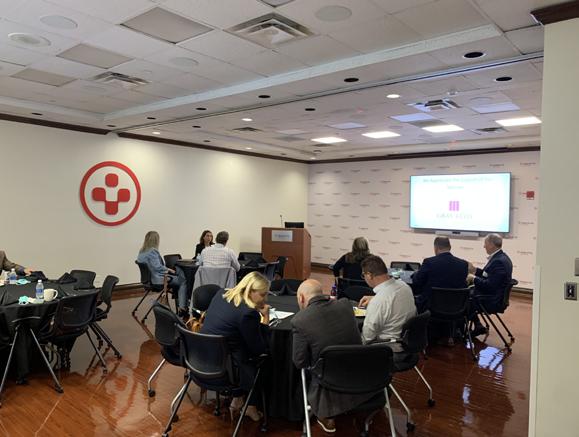
Cocktails with the Chiefs
October 11, 2022

